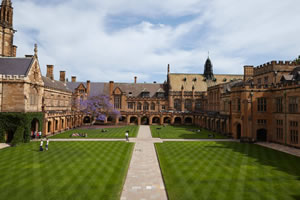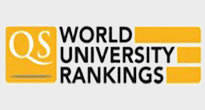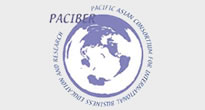FB06473C-CE38-4907-9D3F-73159BD6AB9D
2017
THE
351
400
95E005A8-5E10-469C-1FBA-CF5E15ABE248
2017
THE
801
9999
FB06473C-CE38-4907-9D3F-73159BD6AB9D
2017
QS
288
66DECA9C-1D21-0861-5742-3B399D20FC28
2017
ARWU
301
400
DD76F047-B9DD-E51A-61B6-D7D74373C016
2017
ARWU
78
DE5AB40A-D635-9122-CE0D-F8A191C26AD3
2017
THE
251
300
D817FB32-53B3-CD38-B827-9EEBA838D98E
2017
ARWU
801
9999
9BA61E82-A163-CA2D-D307-77A2877A6704
2017
ARWU
55
A101E5B9-DDA5-9DA6-FE8C-8F0360FFBE9E
2017
QS
245
C385A03E-F8A5-9E4D-C6AE-5BE3F3232FDF
2017
ARWU
801
9999
FA7B7853-18C3-9B9A-D991-34F214412F36
2017
THE
801
9999
9CDD7E78-0FB5-3529-D0F5-7789DD1C5FF6
2017
ARWU
401
500
57EF7AD9-942B-AEB7-2490-E3F7C38B8A46
2017
ARWU
151
200
F2AEDE3D-21A6-BA5A-1BA5-E7F178002E70
2017
THE
401
500
FA7B7853-18C3-9B9A-D991-34F214412F36
2017
QS
701
916
BE96C93D-4549-FACF-44C3-B074B77BA389
2017
QS
42
26829044-2569-95C7-3F83-70CA25C034E1
2017
THE
251
300
DE5AB40A-D635-9122-CE0D-F8A191C26AD3
2017
QS
218
9BA61E82-A163-CA2D-D307-77A2877A6704
2017
THE
60
0040D076-B454-3E78-75D8-1AF9B3DB4F76
2017
ARWU
201
300
9CDD7E78-0FB5-3529-D0F5-7789DD1C5FF6
2017
QS
252
118F9352-C908-92D5-E456-B9648D702EA1
2017
QS
386
C7469D82-35EE-D0F1-76C4-0EBB2AD080AF
2017
ARWU
97
2CE67EF3-5C4C-9913-86EA-776ECA596089
2017
ARWU
801
9999
C7469D82-35EE-D0F1-76C4-0EBB2AD080AF
2017
THE
52
66DECA9C-1D21-0861-5742-3B399D20FC28
2017
QS
441
450
BE96C93D-4549-FACF-44C3-B074B77BA389
2017
THE
33
DE5AB40A-D635-9122-CE0D-F8A191C26AD3
2017
ARWU
201
300
4E02EF06-2D5A-4381-0794-426D919897E8
2017
THE
801
9999
26829044-2569-95C7-3F83-70CA25C034E1
2017
ARWU
801
9999
26829044-2569-95C7-3F83-70CA25C034E1
2017
QS
340
1399D02A-78F8-F05C-D321-C2714DB71928
2017
QS
917
9999
2CE67EF3-5C4C-9913-86EA-776ECA596089
2017
QS
601
650
57EF7AD9-942B-AEB7-2490-E3F7C38B8A46
2017
QS
306
D817FB32-53B3-CD38-B827-9EEBA838D98E
2017
THE
351
400
89ACB94E-21C0-77B5-2A46-D81C757FBD34
2017
ARWU
101
150
6FC995EB-AA0F-0BA8-DF09-CD6A537831D1
2017
THE
251
300
F64E57C8-26CA-E6ED-3BB3-873CC135A4D3
2017
THE
601
800
98D96464-0E9E-9FD8-D625-8E8617CEA712
2017
ARWU
301
400
8A6E4FC1-36FF-34FE-CD86-D4CA94C4E09E
2017
QS
46
D817FB32-53B3-CD38-B827-9EEBA838D98E
2017
QS
651
700
FB06473C-CE38-4907-9D3F-73159BD6AB9D
2017
ARWU
501
600
4E02EF06-2D5A-4381-0794-426D919897E8
2017
ARWU
801
9999
8A6E4FC1-36FF-34FE-CD86-D4CA94C4E09E
2017
ARWU
83
F2AEDE3D-21A6-BA5A-1BA5-E7F178002E70
2017
QS
551
600
F2AEDE3D-21A6-BA5A-1BA5-E7F178002E70
2017
ARWU
301
400
170FC2CB-AF4F-4858-D710-3276C32C12DF
2017
ARWU
801
9999
E4D1A627-BAAB-93E1-EE30-C863E9AF0809
2017
THE
501
600
170FC2CB-AF4F-4858-D710-3276C32C12DF
2017
THE
801
9999
57EF7AD9-942B-AEB7-2490-E3F7C38B8A46
2017
THE
401
500
66DECA9C-1D21-0861-5742-3B399D20FC28
2017
THE
351
400
6CB3167E-F096-58DF-BDF2-F1E3187E4C97
2017
QS
102
F64E57C8-26CA-E6ED-3BB3-873CC135A4D3
2017
ARWU
801
9999
9BA61E82-A163-CA2D-D307-77A2877A6704
2017
QS
51
4E02EF06-2D5A-4381-0794-426D919897E8
2017
QS
917
9999
0355F202-A692-13A9-7102-1EA977161A1D
2017
QS
551
600
62A17436-CBEC-8FFC-19DD-E0372C20CD48
2017
QS
370
E4D1A627-BAAB-93E1-EE30-C863E9AF0809
2017
ARWU
801
9999
98D96464-0E9E-9FD8-D625-8E8617CEA712
2017
QS
193
351B0937-B3C3-DC7F-9258-BAB3FEEA785E
2017
ARWU
201
300
DD76F047-B9DD-E51A-61B6-D7D74373C016
2017
QS
65
89ACB94E-21C0-77B5-2A46-D81C757FBD34
2017
THE
82
1DE60BDE-5C18-3A6B-348E-8C94A245CC30
2017
QS
125
A101E5B9-DDA5-9DA6-FE8C-8F0360FFBE9E
2017
THE
251
300
A101E5B9-DDA5-9DA6-FE8C-8F0360FFBE9E
2017
ARWU
301
400
170FC2CB-AF4F-4858-D710-3276C32C12DF
2017
QS
701
916
1399D02A-78F8-F05C-D321-C2714DB71928
2017
THE
401
500
6FC995EB-AA0F-0BA8-DF09-CD6A537831D1
2017
ARWU
301
400
89ACB94E-21C0-77B5-2A46-D81C757FBD34
2017
QS
49
C3F01909-B23B-FAD2-A2AA-936138A1CE67
2017
QS
551
600
59FD8AD9-E467-6640-A71F-031EF3944D7A
2017
THE
301
350
0040D076-B454-3E78-75D8-1AF9B3DB4F76
2017
QS
276
C3F01909-B23B-FAD2-A2AA-936138A1CE67
2017
ARWU
601
700
95E005A8-5E10-469C-1FBA-CF5E15ABE248
2017
QS
917
9999
59FD8AD9-E467-6640-A71F-031EF3944D7A
2017
QS
247
E4D1A627-BAAB-93E1-EE30-C863E9AF0809
2017
QS
701
916
0355F202-A692-13A9-7102-1EA977161A1D
2017
THE
251
300
FA7B7853-18C3-9B9A-D991-34F214412F36
2017
ARWU
801
9999
C335268A-EEC8-F44A-AC69-DD99E8A05E7D
2017
ARWU
701
800
29B4E4D0-7524-C712-FFDE-BEB729581CFA
2017
QS
501
550
1DE60BDE-5C18-3A6B-348E-8C94A245CC30
2017
ARWU
101
150
C7469D82-35EE-D0F1-76C4-0EBB2AD080AF
2017
QS
22
1399D02A-78F8-F05C-D321-C2714DB71928
2017
ARWU
801
9999
6CB3167E-F096-58DF-BDF2-F1E3187E4C97
2017
THE
109
29B4E4D0-7524-C712-FFDE-BEB729581CFA
2017
THE
401
500
118F9352-C908-92D5-E456-B9648D702EA1
2017
THE
351
400
207BDED2-A7D0-451F-D7A9-07DE0B29EE9E
2017
THE
251
300
BE96C93D-4549-FACF-44C3-B074B77BA389
2017
ARWU
39
C385A03E-F8A5-9E4D-C6AE-5BE3F3232FDF
2017
THE
801
9999
C3F01909-B23B-FAD2-A2AA-936138A1CE67
2017
THE
501
600
207BDED2-A7D0-451F-D7A9-07DE0B29EE9E
2017
QS
551
600
118F9352-C908-92D5-E456-B9648D702EA1
2017
ARWU
301
400
0040D076-B454-3E78-75D8-1AF9B3DB4F76
2017
THE
251
300
0355F202-A692-13A9-7102-1EA977161A1D
2017
ARWU
401
500
207BDED2-A7D0-451F-D7A9-07DE0B29EE9E
2017
ARWU
801
9999
98D96464-0E9E-9FD8-D625-8E8617CEA712
2017
THE
201
250
59FD8AD9-E467-6640-A71F-031EF3944D7A
2017
ARWU
151
200
8A6E4FC1-36FF-34FE-CD86-D4CA94C4E09E
2017
THE
56
1DE60BDE-5C18-3A6B-348E-8C94A245CC30
2017
THE
149
F64E57C8-26CA-E6ED-3BB3-873CC135A4D3
2017
QS
701
916
C335268A-EEC8-F44A-AC69-DD99E8A05E7D
2017
QS
701
916
95E005A8-5E10-469C-1FBA-CF5E15ABE248
2017
ARWU
801
9999
29B4E4D0-7524-C712-FFDE-BEB729581CFA
2017
ARWU
701
800
C385A03E-F8A5-9E4D-C6AE-5BE3F3232FDF
2017
QS
461
470
DD76F047-B9DD-E51A-61B6-D7D74373C016
2017
THE
73
62A17436-CBEC-8FFC-19DD-E0372C20CD48
2017
THE
251
300
351B0937-B3C3-DC7F-9258-BAB3FEEA785E
2017
THE
301
350
351B0937-B3C3-DC7F-9258-BAB3FEEA785E
2017
QS
355
6FC995EB-AA0F-0BA8-DF09-CD6A537831D1
2017
QS
336
6CB3167E-F096-58DF-BDF2-F1E3187E4C97
2017
ARWU
91
9CDD7E78-0FB5-3529-D0F5-7789DD1C5FF6
2017
THE
401
500
62A17436-CBEC-8FFC-19DD-E0372C20CD48
2017
ARWU
201
300
C335268A-EEC8-F44A-AC69-DD99E8A05E7D
2017
THE
801
9999
2CE67EF3-5C4C-9913-86EA-776ECA596089
2017
THE
501
600
8A6E4FC1-36FF-34FE-CD86-D4CA94C4E09E
2018
QS
50
A101E5B9-DDA5-9DA6-FE8C-8F0360FFBE9E
2018
QS
224
1DE60BDE-5C18-3A6B-348E-8C94A245CC30
2018
ARWU
101
150
D817FB32-53B3-CD38-B827-9EEBA838D98E
2018
ARWU
1001
9999
6FC995EB-AA0F-0BA8-DF09-CD6A537831D1
2018
ARWU
301
400
0355F202-A692-13A9-7102-1EA977161A1D
2018
THE
351
400
170FC2CB-AF4F-4858-D710-3276C32C12DF
2018
QS
801
1000
29B4E4D0-7524-C712-FFDE-BEB729581CFA
2018
THE
401
500
59FD8AD9-E467-6640-A71F-031EF3944D7A
2018
QS
240
BE96C93D-4549-FACF-44C3-B074B77BA389
2018
THE
33
9CDD7E78-0FB5-3529-D0F5-7789DD1C5FF6
2018
QS
247
6FC995EB-AA0F-0BA8-DF09-CD6A537831D1
2018
QS
325
89ACB94E-21C0-77B5-2A46-D81C757FBD34
2018
THE
78
FB06473C-CE38-4907-9D3F-73159BD6AB9D
2018
THE
251
300
C3F01909-B23B-FAD2-A2AA-936138A1CE67
2018
ARWU
601
700
118F9352-C908-92D5-E456-B9648D702EA1
2018
THE
351
400
351B0937-B3C3-DC7F-9258-BAB3FEEA785E
2018
QS
293
C385A03E-F8A5-9E4D-C6AE-5BE3F3232FDF
2018
QS
431
440
9BA61E82-A163-CA2D-D307-77A2877A6704
2018
THE
60
95E005A8-5E10-469C-1FBA-CF5E15ABE248
2018
THE
501
600
BE96C93D-4549-FACF-44C3-B074B77BA389
2018
ARWU
38
DE5AB40A-D635-9122-CE0D-F8A191C26AD3
2018
THE
251
300
9BA61E82-A163-CA2D-D307-77A2877A6704
2018
ARWU
55
8A6E4FC1-36FF-34FE-CD86-D4CA94C4E09E
2018
THE
60
9CDD7E78-0FB5-3529-D0F5-7789DD1C5FF6
2018
ARWU
301
400
8A6E4FC1-36FF-34FE-CD86-D4CA94C4E09E
2018
ARWU
68
1871FA64-B963-11E9-BEA9-00163E001277
2018
QS
11
F64E57C8-26CA-E6ED-3BB3-873CC135A4D3
2018
QS
751
800
0355F202-A692-13A9-7102-1EA977161A1D
2018
QS
551
600
59FD8AD9-E467-6640-A71F-031EF3944D7A
2018
THE
251
300
207BDED2-A7D0-451F-D7A9-07DE0B29EE9E
2018
ARWU
1001
9999
57EF7AD9-942B-AEB7-2490-E3F7C38B8A46
2018
QS
262
26829044-2569-95C7-3F83-70CA25C034E1
2018
THE
251
300
98D96464-0E9E-9FD8-D625-8E8617CEA712
2018
ARWU
301
400
207BDED2-A7D0-451F-D7A9-07DE0B29EE9E
2018
THE
251
300
C385A03E-F8A5-9E4D-C6AE-5BE3F3232FDF
2018
THE
501
600
FA7B7853-18C3-9B9A-D991-34F214412F36
2018
QS
801
1000
0355F202-A692-13A9-7102-1EA977161A1D
2018
ARWU
401
500
DD76F047-B9DD-E51A-61B6-D7D74373C016
2018
THE
74
207BDED2-A7D0-451F-D7A9-07DE0B29EE9E
2018
QS
651
700
D817FB32-53B3-CD38-B827-9EEBA838D98E
2018
THE
351
400
62A17436-CBEC-8FFC-19DD-E0372C20CD48
2018
QS
313
1DE60BDE-5C18-3A6B-348E-8C94A245CC30
2018
QS
109
59FD8AD9-E467-6640-A71F-031EF3944D7A
2018
ARWU
201
300
FB06473C-CE38-4907-9D3F-73159BD6AB9D
2018
ARWU
601
700
1399D02A-78F8-F05C-D321-C2714DB71928
2018
THE
501
600
66DECA9C-1D21-0861-5742-3B399D20FC28
2018
THE
351
400
170FC2CB-AF4F-4858-D710-3276C32C12DF
2018
ARWU
901
1000
BE96C93D-4549-FACF-44C3-B074B77BA389
2018
QS
41
18AC4751-B963-11E9-BEA9-00163E001277
2018
QS
1
DE5AB40A-D635-9122-CE0D-F8A191C26AD3
2018
QS
232
C7469D82-35EE-D0F1-76C4-0EBB2AD080AF
2018
QS
20
6CB3167E-F096-58DF-BDF2-F1E3187E4C97
2018
ARWU
93
FA7B7853-18C3-9B9A-D991-34F214412F36
2018
ARWU
501
600
FB06473C-CE38-4907-9D3F-73159BD6AB9D
2018
QS
279
351B0937-B3C3-DC7F-9258-BAB3FEEA785E
2018
THE
251
300
98D96464-0E9E-9FD8-D625-8E8617CEA712
2018
QS
176
1399D02A-78F8-F05C-D321-C2714DB71928
2018
QS
801
1000
9BA61E82-A163-CA2D-D307-77A2877A6704
2018
QS
47
2CE67EF3-5C4C-9913-86EA-776ECA596089
2018
ARWU
1001
9999
195B428B-B963-11E9-BEA9-00163E001277
2018
QS
6
1DE60BDE-5C18-3A6B-348E-8C94A245CC30
2018
THE
142
29B4E4D0-7524-C712-FFDE-BEB729581CFA
2018
ARWU
601
700
E4D1A627-BAAB-93E1-EE30-C863E9AF0809
2018
ARWU
801
900
19951687-B963-11E9-BEA9-00163E001277
2018
QS
16
F64E57C8-26CA-E6ED-3BB3-873CC135A4D3
2018
THE
601
800
89ACB94E-21C0-77B5-2A46-D81C757FBD34
2018
QS
45
6FC995EB-AA0F-0BA8-DF09-CD6A537831D1
2018
THE
251
300
98D96464-0E9E-9FD8-D625-8E8617CEA712
2018
THE
201
250
4E02EF06-2D5A-4381-0794-426D919897E8
2018
QS
1001
9999
6CB3167E-F096-58DF-BDF2-F1E3187E4C97
2018
QS
93
E4D1A627-BAAB-93E1-EE30-C863E9AF0809
2018
THE
501
600
57EF7AD9-942B-AEB7-2490-E3F7C38B8A46
2018
THE
401
500
26829044-2569-95C7-3F83-70CA25C034E1
2018
QS
367
95E005A8-5E10-469C-1FBA-CF5E15ABE248
2018
QS
801
1000
D817FB32-53B3-CD38-B827-9EEBA838D98E
2018
QS
701
750
26829044-2569-95C7-3F83-70CA25C034E1
2018
ARWU
1001
9999
57EF7AD9-942B-AEB7-2490-E3F7C38B8A46
2018
ARWU
151
200
F2AEDE3D-21A6-BA5A-1BA5-E7F178002E70
2018
THE
401
500
0040D076-B454-3E78-75D8-1AF9B3DB4F76
2018
QS
247
A101E5B9-DDA5-9DA6-FE8C-8F0360FFBE9E
2018
THE
201
250
FA7B7853-18C3-9B9A-D991-34F214412F36
2018
THE
601
800
C3F01909-B23B-FAD2-A2AA-936138A1CE67
2018
THE
401
500
C3F01909-B23B-FAD2-A2AA-936138A1CE67
2018
QS
551
600
62A17436-CBEC-8FFC-19DD-E0372C20CD48
2018
THE
301
350
F2AEDE3D-21A6-BA5A-1BA5-E7F178002E70
2018
QS
551
600
C335268A-EEC8-F44A-AC69-DD99E8A05E7D
2018
THE
801
9999
C7469D82-35EE-D0F1-76C4-0EBB2AD080AF
2018
ARWU
69
29B4E4D0-7524-C712-FFDE-BEB729581CFA
2018
QS
501
550
0040D076-B454-3E78-75D8-1AF9B3DB4F76
2018
ARWU
201
300
18E6C994-B963-11E9-BEA9-00163E001277
2018
QS
26
62A17436-CBEC-8FFC-19DD-E0372C20CD48
2018
ARWU
201
300
170FC2CB-AF4F-4858-D710-3276C32C12DF
2018
THE
801
9999
DE5AB40A-D635-9122-CE0D-F8A191C26AD3
2018
ARWU
201
300
E4D1A627-BAAB-93E1-EE30-C863E9AF0809
2018
QS
751
800
2CE67EF3-5C4C-9913-86EA-776ECA596089
2018
THE
401
500
0040D076-B454-3E78-75D8-1AF9B3DB4F76
2018
THE
201
250
66DECA9C-1D21-0861-5742-3B399D20FC28
2018
ARWU
301
400
C7469D82-35EE-D0F1-76C4-0EBB2AD080AF
2018
THE
47
4E02EF06-2D5A-4381-0794-426D919897E8
2018
THE
801
9999
2CE67EF3-5C4C-9913-86EA-776ECA596089
2018
QS
601
650
C335268A-EEC8-F44A-AC69-DD99E8A05E7D
2018
ARWU
701
800
19213CEB-B963-11E9-BEA9-00163E001277
2018
QS
1
6CB3167E-F096-58DF-BDF2-F1E3187E4C97
2018
THE
125
1399D02A-78F8-F05C-D321-C2714DB71928
2018
ARWU
1001
9999
66DECA9C-1D21-0861-5742-3B399D20FC28
2018
QS
421
430
A101E5B9-DDA5-9DA6-FE8C-8F0360FFBE9E
2018
ARWU
301
400
C385A03E-F8A5-9E4D-C6AE-5BE3F3232FDF
2018
ARWU
1001
9999
89ACB94E-21C0-77B5-2A46-D81C757FBD34
2018
ARWU
101
150
9CDD7E78-0FB5-3529-D0F5-7789DD1C5FF6
2018
THE
401
500
DD76F047-B9DD-E51A-61B6-D7D74373C016
2018
ARWU
91
351B0937-B3C3-DC7F-9258-BAB3FEEA785E
2018
ARWU
201
300
F64E57C8-26CA-E6ED-3BB3-873CC135A4D3
2018
ARWU
1001
9999
118F9352-C908-92D5-E456-B9648D702EA1
2018
QS
360
118F9352-C908-92D5-E456-B9648D702EA1
2018
ARWU
301
400
C335268A-EEC8-F44A-AC69-DD99E8A05E7D
2018
QS
801
1000
95E005A8-5E10-469C-1FBA-CF5E15ABE248
2018
ARWU
701
800
DD76F047-B9DD-E51A-61B6-D7D74373C016
2018
QS
60
F2AEDE3D-21A6-BA5A-1BA5-E7F178002E70
2018
ARWU
401
500
4E02EF06-2D5A-4381-0794-426D919897E8
2018
ARWU
1001
9999
F64E57C8-26CA-E6ED-3BB3-873CC135A4D3
2019
QS
751
800
6FC995EB-AA0F-0BA8-DF09-CD6A537831D1
2019
QS
329
C335268A-EEC8-F44A-AC69-DD99E8A05E7D
2019
U.S. News
692
59FD8AD9-E467-6640-A71F-031EF3944D7A
2019
THE
201
250
E4D1A627-BAAB-93E1-EE30-C863E9AF0809
2019
QS
751
800
BE96C93D-4549-FACF-44C3-B074B77BA389
2019
QS
39
E4D1A627-BAAB-93E1-EE30-C863E9AF0809
2019
THE
501
600
1871FA64-B963-11E9-BEA9-00163E001277
2019
QS
17
9BA61E82-A163-CA2D-D307-77A2877A6704
2019
U.S. News
42
26829044-2569-95C7-3F83-70CA25C034E1
2019
U.S. News
245
2CE67EF3-5C4C-9913-86EA-776ECA596089
2019
QS
601
650
19213CEB-B963-11E9-BEA9-00163E001277
2019
QS
1
A101E5B9-DDA5-9DA6-FE8C-8F0360FFBE9E
2019
THE
301
350
2CE67EF3-5C4C-9913-86EA-776ECA596089
2019
THE
501
600
DD76F047-B9DD-E51A-61B6-D7D74373C016
2019
QS
59
C335268A-EEC8-F44A-AC69-DD99E8A05E7D
2019
THE
801
9999
95E005A8-5E10-469C-1FBA-CF5E15ABE248
2019
THE
601
800
62A17436-CBEC-8FFC-19DD-E0372C20CD48
2019
QS
287
89ACB94E-21C0-77B5-2A46-D81C757FBD34
2019
U.S. News
70
DE5AB40A-D635-9122-CE0D-F8A191C26AD3
2019
QS
218
C335268A-EEC8-F44A-AC69-DD99E8A05E7D
2019
QS
801
1000
A101E5B9-DDA5-9DA6-FE8C-8F0360FFBE9E
2019
QS
214
26829044-2569-95C7-3F83-70CA25C034E1
2019
THE
201
250
118F9352-C908-92D5-E456-B9648D702EA1
2019
U.S. News
454
207BDED2-A7D0-451F-D7A9-07DE0B29EE9E
2019
THE
501
600
C7469D82-35EE-D0F1-76C4-0EBB2AD080AF
2019
THE
49
26829044-2569-95C7-3F83-70CA25C034E1
2019
QS
369
DE5AB40A-D635-9122-CE0D-F8A191C26AD3
2019
U.S. News
272
0355F202-A692-13A9-7102-1EA977161A1D
2019
THE
251
300
66DECA9C-1D21-0861-5742-3B399D20FC28
2019
THE
401
500
98D96464-0E9E-9FD8-D625-8E8617CEA712
2019
THE
196
207BDED2-A7D0-451F-D7A9-07DE0B29EE9E
2019
QS
651
700
118F9352-C908-92D5-E456-B9648D702EA1
2019
QS
397
BE96C93D-4549-FACF-44C3-B074B77BA389
2019
THE
32
D817FB32-53B3-CD38-B827-9EEBA838D98E
2019
QS
651
700
95E005A8-5E10-469C-1FBA-CF5E15ABE248
2019
QS
801
1000
57EF7AD9-942B-AEB7-2490-E3F7C38B8A46
2019
QS
250
0040D076-B454-3E78-75D8-1AF9B3DB4F76
2019
THE
201
250
FB06473C-CE38-4907-9D3F-73159BD6AB9D
2019
U.S. News
384
351B0937-B3C3-DC7F-9258-BAB3FEEA785E
2019
U.S. News
240
FB06473C-CE38-4907-9D3F-73159BD6AB9D
2019
QS
264
FA7B7853-18C3-9B9A-D991-34F214412F36
2019
U.S. News
653
6CB3167E-F096-58DF-BDF2-F1E3187E4C97
2019
QS
91
19951687-B963-11E9-BEA9-00163E001277
2019
QS
15
C385A03E-F8A5-9E4D-C6AE-5BE3F3232FDF
2019
QS
443
C385A03E-F8A5-9E4D-C6AE-5BE3F3232FDF
2019
U.S. News
1250
9999
6FC995EB-AA0F-0BA8-DF09-CD6A537831D1
2019
THE
251
300
89ACB94E-21C0-77B5-2A46-D81C757FBD34
2019
QS
45
62A17436-CBEC-8FFC-19DD-E0372C20CD48
2019
THE
351
400
8A6E4FC1-36FF-34FE-CD86-D4CA94C4E09E
2019
THE
59
9CDD7E78-0FB5-3529-D0F5-7789DD1C5FF6
2019
QS
250
4E02EF06-2D5A-4381-0794-426D919897E8
2019
U.S. News
1250
9999
29B4E4D0-7524-C712-FFDE-BEB729581CFA
2019
THE
401
500
6CB3167E-F096-58DF-BDF2-F1E3187E4C97
2019
THE
135
D817FB32-53B3-CD38-B827-9EEBA838D98E
2019
THE
301
350
66DECA9C-1D21-0861-5742-3B399D20FC28
2019
U.S. News
399
351B0937-B3C3-DC7F-9258-BAB3FEEA785E
2019
THE
351
400
8A6E4FC1-36FF-34FE-CD86-D4CA94C4E09E
2019
QS
42
DD76F047-B9DD-E51A-61B6-D7D74373C016
2019
THE
84
170FC2CB-AF4F-4858-D710-3276C32C12DF
2019
U.S. News
745
1399D02A-78F8-F05C-D321-C2714DB71928
2019
THE
501
600
4E02EF06-2D5A-4381-0794-426D919897E8
2019
QS
1001
9999
57EF7AD9-942B-AEB7-2490-E3F7C38B8A46
2019
THE
301
350
FA7B7853-18C3-9B9A-D991-34F214412F36
2019
QS
801
1000
118F9352-C908-92D5-E456-B9648D702EA1
2019
THE
301
350
29B4E4D0-7524-C712-FFDE-BEB729581CFA
2019
QS
591
600
C3F01909-B23B-FAD2-A2AA-936138A1CE67
2019
U.S. News
690
DD76F047-B9DD-E51A-61B6-D7D74373C016
2019
U.S. News
62
1DE60BDE-5C18-3A6B-348E-8C94A245CC30
2019
QS
114
0040D076-B454-3E78-75D8-1AF9B3DB4F76
2019
U.S. News
242
18E6C994-B963-11E9-BEA9-00163E001277
2019
QS
25
E4D1A627-BAAB-93E1-EE30-C863E9AF0809
2019
U.S. News
653
57EF7AD9-942B-AEB7-2490-E3F7C38B8A46
2019
U.S. News
234
F2AEDE3D-21A6-BA5A-1BA5-E7F178002E70
2019
QS
498
18AC4751-B963-11E9-BEA9-00163E001277
2019
QS
30
1DE60BDE-5C18-3A6B-348E-8C94A245CC30
2019
THE
135
89ACB94E-21C0-77B5-2A46-D81C757FBD34
2019
THE
96
9CDD7E78-0FB5-3529-D0F5-7789DD1C5FF6
2019
U.S. News
341
C385A03E-F8A5-9E4D-C6AE-5BE3F3232FDF
2019
THE
501
600
9BA61E82-A163-CA2D-D307-77A2877A6704
2019
THE
69
C7469D82-35EE-D0F1-76C4-0EBB2AD080AF
2019
U.S. News
66
FB06473C-CE38-4907-9D3F-73159BD6AB9D
2019
THE
201
250
351B0937-B3C3-DC7F-9258-BAB3FEEA785E
2019
QS
309
170FC2CB-AF4F-4858-D710-3276C32C12DF
2019
THE
801
9999
F64E57C8-26CA-E6ED-3BB3-873CC135A4D3
2019
THE
601
800
1399D02A-78F8-F05C-D321-C2714DB71928
2019
QS
801
1000
F2AEDE3D-21A6-BA5A-1BA5-E7F178002E70
2019
THE
351
400
F2AEDE3D-21A6-BA5A-1BA5-E7F178002E70
2019
U.S. News
320
9BA61E82-A163-CA2D-D307-77A2877A6704
2019
QS
48
0355F202-A692-13A9-7102-1EA977161A1D
2019
QS
478
2CE67EF3-5C4C-9913-86EA-776ECA596089
2019
U.S. News
1250
9999
0355F202-A692-13A9-7102-1EA977161A1D
2019
U.S. News
388
4E02EF06-2D5A-4381-0794-426D919897E8
2019
THE
801
9999
1DE60BDE-5C18-3A6B-348E-8C94A245CC30
2019
U.S. News
102
F64E57C8-26CA-E6ED-3BB3-873CC135A4D3
2019
U.S. News
1250
9999
29B4E4D0-7524-C712-FFDE-BEB729581CFA
2019
U.S. News
605
98D96464-0E9E-9FD8-D625-8E8617CEA712
2019
U.S. News
245
C3F01909-B23B-FAD2-A2AA-936138A1CE67
2019
QS
601
650
59FD8AD9-E467-6640-A71F-031EF3944D7A
2019
U.S. News
238
DE5AB40A-D635-9122-CE0D-F8A191C26AD3
2019
THE
201
250
C7469D82-35EE-D0F1-76C4-0EBB2AD080AF
2019
QS
24
59FD8AD9-E467-6640-A71F-031EF3944D7A
2019
QS
250
95E005A8-5E10-469C-1FBA-CF5E15ABE248
2019
U.S. News
1040
66DECA9C-1D21-0861-5742-3B399D20FC28
2019
QS
387
170FC2CB-AF4F-4858-D710-3276C32C12DF
2019
QS
801
1000
FA7B7853-18C3-9B9A-D991-34F214412F36
2019
THE
401
500
1399D02A-78F8-F05C-D321-C2714DB71928
2019
U.S. News
846
9CDD7E78-0FB5-3529-D0F5-7789DD1C5FF6
2019
THE
401
500
D817FB32-53B3-CD38-B827-9EEBA838D98E
2019
U.S. News
1250
9999
8A6E4FC1-36FF-34FE-CD86-D4CA94C4E09E
2019
U.S. News
31
62A17436-CBEC-8FFC-19DD-E0372C20CD48
2019
U.S. News
320
A101E5B9-DDA5-9DA6-FE8C-8F0360FFBE9E
2019
U.S. News
276
195B428B-B963-11E9-BEA9-00163E001277
2019
QS
5
98D96464-0E9E-9FD8-D625-8E8617CEA712
2019
QS
160
6FC995EB-AA0F-0BA8-DF09-CD6A537831D1
2019
U.S. News
240
6CB3167E-F096-58DF-BDF2-F1E3187E4C97
2019
U.S. News
81
207BDED2-A7D0-451F-D7A9-07DE0B29EE9E
2019
U.S. News
788
BE96C93D-4549-FACF-44C3-B074B77BA389
2019
U.S. News
26
0040D076-B454-3E78-75D8-1AF9B3DB4F76
2019
QS
244
C3F01909-B23B-FAD2-A2AA-936138A1CE67
2019
THE
201
250
1DE60BDE-5C18-3A6B-348E-8C94A245CC30
2020
QS
106
C3F01909-B23B-FAD2-A2AA-936138A1CE67
2020
QS
484
118F9352-C908-92D5-E456-B9648D702EA1
2020
QS
400
FA7B7853-18C3-9B9A-D991-34F214412F36
2020
QS
801
C7469D82-35EE-D0F1-76C4-0EBB2AD080AF
2020
QS
29
6FC995EB-AA0F-0BA8-DF09-CD6A537831D1
2020
QS
320
66DECA9C-1D21-0861-5742-3B399D20FC28
2020
QS
383
DE5AB40A-D635-9122-CE0D-F8A191C26AD3
2020
QS
212
F64E57C8-26CA-E6ED-3BB3-873CC135A4D3
2020
QS
751
800
207BDED2-A7D0-451F-D7A9-07DE0B29EE9E
2020
QS
651
700
0355F202-A692-13A9-7102-1EA977161A1D
2020
QS
424
9CDD7E78-0FB5-3529-D0F5-7789DD1C5FF6
2020
QS
238
170FC2CB-AF4F-4858-D710-3276C32C12DF
2020
QS
1001
9999
1399D02A-78F8-F05C-D321-C2714DB71928
2020
QS
751
800
D817FB32-53B3-CD38-B827-9EEBA838D98E
2020
QS
601
650
A101E5B9-DDA5-9DA6-FE8C-8F0360FFBE9E
2020
QS
207
0040D076-B454-3E78-75D8-1AF9B3DB4F76
2020
QS
224
59FD8AD9-E467-6640-A71F-031EF3944D7A
2020
QS
237
4E02EF06-2D5A-4381-0794-426D919897E8
2020
QS
1001
9999
351B0937-B3C3-DC7F-9258-BAB3FEEA785E
2020
QS
271
89ACB94E-21C0-77B5-2A46-D81C757FBD34
2020
QS
43
26829044-2569-95C7-3F83-70CA25C034E1
2020
QS
377
8A6E4FC1-36FF-34FE-CD86-D4CA94C4E09E
2020
QS
42
95E005A8-5E10-469C-1FBA-CF5E15ABE248
2020
QS
1001
9999
2CE67EF3-5C4C-9913-86EA-776ECA596089
2020
QS
601
650
29B4E4D0-7524-C712-FFDE-BEB729581CFA
2020
QS
571
580
6CB3167E-F096-58DF-BDF2-F1E3187E4C97
2020
QS
86
57EF7AD9-942B-AEB7-2490-E3F7C38B8A46
2020
QS
230
C335268A-EEC8-F44A-AC69-DD99E8A05E7D
2020
QS
801
1000
BE96C93D-4549-FACF-44C3-B074B77BA389
2020
QS
38
FB06473C-CE38-4907-9D3F-73159BD6AB9D
2020
QS
274
DD76F047-B9DD-E51A-61B6-D7D74373C016
2020
QS
58
C385A03E-F8A5-9E4D-C6AE-5BE3F3232FDF
2020
QS
442
9BA61E82-A163-CA2D-D307-77A2877A6704
2020
QS
47
98D96464-0E9E-9FD8-D625-8E8617CEA712
2020
QS
140
62A17436-CBEC-8FFC-19DD-E0372C20CD48
2020
QS
291
E4D1A627-BAAB-93E1-EE30-C863E9AF0809
2020
QS
651
700
F2AEDE3D-21A6-BA5A-1BA5-E7F178002E70
2020
QS
468









